By The Biography Clearinghouse As we come to the end of another calendar year, we reflect upon how much the world can change in just a few short months. Political turmoil, violence, and war threaten the lives of millions. Climate scientists tell us that 2023 was the hottest year on record. Devastating fires and floods ravaged cities, towns, and forests alike. These catastrophes may feel unique to our life experience, so it helps to remember that people before us have faced hardships too. Again, we turn to biographies to learn from the people among us and those who came before us. What lessons in leadership can we find? How do artists, faith leaders, scientists, activists, educators, and others work towards goals? Handle setbacks? Cope with prejudice? Persevere while facing devastation? Work collaboratively to create change? In this year-end blog entry, we share a few picture book biographies from 2022 and 2023 that were inspiring to us, as well as preview a 2024 biography. With best wishes for peace in the New Year, The Biography Clearinghouse Team
Winter Hiatus Announcement
By Kathryn Will and River Lusky As we emerge from a long winter with the lengthening of days to warm the earth, I am drawn to books that get us thinking about nature–the plant and animal life in the world. As the NCBLA committee will tell you, I love books about nature, and this year many of the books we reviewed for the 2022 Notable Children’s Books in the Language Arts award list were about the natural world. For this text set we chose three books that leverage nonfiction, poetry, and a picture book to develop content knowledge, build vocabulary, and encourage divergent thinking about the natural world. They invite readers to be curious about nature in both big and small ways. Teachers can easily deepen and extend the texts through a variety of activities, and we have created a few to get you started. Wonder Walkers
If you are interested in learning more about how Micah Archer creates her collages check out the two videos below. The first provides a a brief glimpse of her printmaking, and the second offers a much more extensive look into how she creates the collage materials and assembles them for the book.
What's inside a flower and other questions about science and nature
Author Read Aloud. Brightly Storytime is is a co-production of Penguin Random House. The dirt book: Poems about animals that live beneath our feet
Announcing the 2022 NCBLA list
These are just three of the 774 books the seven members of the Notable Children’s Books in Language Arts book award committee read and reviewed for consideration of selection for the 30-book list created annually. The careful analysis and rich discussions over monthly (and sometimes weekly) Zoom sessions allowed us to create a thoughtful list that meets the charge of the committee.
The charge of the seven-member national committee is to select 30 books that best exemplify the criteria established for the Notables Award. Books considered for this annual list are works of fiction, non-fiction, and poetry written for children, grades K-8. The books selected for the list must:
2022 NCBLA Committee members
Kathryn Will, Chair (University of Maine Farmington) @KWsLitCrew Vera Ahihya (Brooklyn Arbor Elementary School) @thetututeacher Patrick Andrus (Eden Prairie School District, Minnesota) @patrickontwit Dorian Harrison (Ohio State University at Newark) Laretta Henderson (Eastern Illinois University) @EIU_PKthru12GEd Janine Schall (The University of Texas Rio Grande Valley) Fran Wilson (Madeira Elementary School, Ohio) @mrswilsons2nd *All NCBLA Committee members are members of CLA Kathryn Will is Assistant Professor Literacy at the University of Maine Farmington. She served as Chair of the 2022 Notable Children’s Books in Language Arts committee. River Lusky is an undergraduate student at the University of Maine Farmington. By Ted Kesler I have just completed my position as chairperson of the NCTE Poetry and Verse Novels for Children Committee. Our list of notable poetry and verse novels that were published in 2021 as well as other information about the award can be found on the NCTE Award for Excellence in Poetry for Children page. In this blog post, I discuss three notable poetry books from this list that promote advocacy and provide lesson plan ideas to do with children. Photo Ark ABCPhoto Ark ABC: An Animal Alphabet in Poetry and Pictures, poetry by Debbie Levy and photos by Joel Sartore (National Geographic Kids, 2021). The diverse and playful poetry forms in Photo Ark ABC oscillate with vibrant pictures to create fascination with each animal that is represented. Here is one example:
The book is part of the Photo Ark Project, that aims to “document every species living in the world’s zoos and wildlife sanctuaries, inspire action through education, and help save wildlife by supporting on-the-ground conservation efforts” [Back Book Cover]. Therefore, the book provides wonderful online resources to use with children, which expand opportunities for classroom explorations. Here are some ideas:
The Last Straw The Last Straw: Kids vs. Plastics, poetry by Susan Hood, illust. by Christiane Engel (HarperCollins, 2021).
My Thoughts are Clouds
My Thoughts Are Clouds: Poems for Mindfulness, poetry by Georgia Heard, illust. by Isabel Roxas (Roaring Brook Press, 2021).
Ted Kesler, Ed.D. is an Associate Professor at Queens College, CUNY and has been a CLA Member since 2010. He served as chairperson of the NCTE Poetry and Verse Novels for Children Committee from 2019 to 2021. www.tedsclassroom.com | @tedsclassroom | www.facebook.com/tedsclassroom) BY JENNIFER M. GRAFF & JOYCE BALCOS BUTLER, ON BEHALF OF THE BIOGRAPHY CLEARINGHOUSE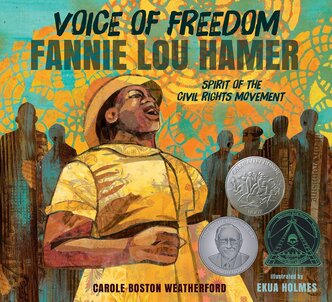 Our current celebration of poetry as a powerful cultural artifact and the national dialogue about voting rights generated by the introduction of 300+ legislative voting-restriction and 800+ voting-expansion bills in 47 states have inspired a rereading of the evocative, award-winning picturebook biography, Voice of Freedom: Fannie Lou Hamer, Spirit of the Civil Rights Movement. Written by Carole Boston Weatherford, illustrated by Ekua Holmes, and published by Candlewick Press in 2015, Voice of Freedom offers a vivid portrait of the life and legacy of civil rights activist, Fannie Lou Hamer. Her famous statement, “All my life I’ve been sick and tired. Now I’m sick and tired of being sick and tired” (p.18) serves as a testimonial to the psychological and physiological effects of the injustices and violence inflicted upon Hamer and other Black community members in Mississippi. Additionally, Hamer’s statement signifies her tenacity, conviction, and unwavering fight for voting rights, congressional representation, and other critical components of racial equality until her death in 1977.
Below we feature one of two time-gradated teaching recommendations included in the Create section of the Voice of Freedom book entry. Youth As Agents of Change in Local CommunitiesWeatherford begins Voice of Freedom with Hamer’s own words: “The truest thing that we have in this country at this time is little children . . . . If they think you’ve made a mistake, kids speak out.” Pairing Hamer’s advocacy detailed in Voice of Freedom with contemporary youth activists, guide students in their exploration of how they can (or continue to) be agents of change in their communities.
To see more classroom possibilities and helpful resources connected to Voice of Freedom: Fannie Lou Hamer, Spirit of the Civil Rights Movement, visit the Book Entry at The Biography Clearinghouse. Additionally, we’d love to hear how the interview and these ideas inspired you. Email us at [email protected] with your connections, creations, and questions. Jennifer M. Graff is an Associate Professor in the Department of Language and Literacy Education at the University of Georgia where her scholarship focuses on diverse children’s literature and early childhood literacy practices. She is a former committee member of NCTE’s Orbis Pictus Award for Outstanding Nonfiction K-8, and has served in multiple leadership roles throughout her 15+ year CLA membership. Joyce Balcos Butler is a fifth-grade teacher in Winder, Georgia, where she focuses on implementing social justice learning through content areas. She is a National Writing Project Teacher Consultant, a Red Clay Writing Fellow at the University of Georgia, and a member of CLA. BY LAUREN AIMONETTE LIANG Last year, right around this time, the Fall 2019 issue of JCL arrived in the mail. In the President’s Message I had written a bit about my excitement for the upcoming NCTE conference: It starts for me with the airplane travel. Coming from my area, it is rare to board a flight heading to a major conference and not encounter fellow teachers, librarians, and researchers embarking on the same adventure. We wave, ask about colleagues and friends, and buzz a bit with excitement. (I often think the other travelers must later wonder about these groups of individuals who are all grading papers and reading thick books, while simultaneously winning all the in-flight trivia and scrabble games.) Once we arrive at the NCTE city, conference-goers from all over are grabbing bags, looking for shuttles and taxis, and heading off to the area hotels. Immediately there is a shared sense of purpose and anticipation. Conversations break out in the hotel elevators about whether registration is open, and the time of the opening session. Hordes of badge-wearing, tote-bag laden attendees appear in long lines at the coffee stands and take over the sidewalks in their sensible walking shoes as they head off for the day. And then the conference! Hour after hour of thought-provoking sessions, with speakers addressing the important issues in our field, provoking new ideas, and sharing possible solutions. The vibrant displays of new books in the exhibit hall waiting to be shared by knowledgeable and enthusiastic publishers who offer sneak peeks that might be perfect for your classroom. And, best of all, that amazing shared sense of being present with each other—knowing that the people gathered here care just as deeply as you do about supporting children’s and teen’s literacy experiences and growth. The Children’s Literature Assembly events at NCTE are a highlight for many attendees. A history of consistent excellence makes our CLA Notables Session, CLA Master Class, and CLA Breakfast the starred events on many personal conference schedules...
Notable Children’s Books in the Language Arts AwardS
Join the members of the Notable Children’s Books in the Language Arts award committee in a live event on Sunday afternoon from 1:45- 3:00 pm ET. Throughout the fall this blog has featured posts from members of this committee. Join them live for more outstanding 2020 titles and suggestions for classroom use.
Annual CLA Breakfast
Bring your breakfast to listen to amazing author Jason Reynolds, this year’s CLA Breakfast keynote speaker! In a live session Sunday morning from 9:00 – 10:15 am ET, the 2020-21 National Ambassador for Young People’s Literature will talk about his writing and more.
Lauren Aimonette Liang is an associate professor at the University of Utah and the current president of CLA. Living Literately and Mindfully at the Intersection of Mother Nature, the Animal World and Poetry11/9/2020
BY PEGGY S. RICE Consider...
Serenity can be found at the intersection of Mother Nature, the animal world and poetry. I have found that the more time I spend at this intersection, the less anxiety I feel. Following are materials and strategies, my students, daughter and I have found successful:
Poetry Performance
Power of Place Locate a space surrounded in nature that you can visit regularly. I am fortunate, because I live on 7 acres with a pond. When visiting this space, be prepared to engage in mindful listening, see the world with a poet’s eyes and take notes in a writing journal.
Poetry Writing Writing poetry is all about playing with words. Fletcher (2002) encourages us to play with the sounds of words. Consider, rhythm, rhyme, repetition, onomatopoeia and alliteration. He also encourages us to think fragments/cut unnecessary words, consider shape, use white space/experiment with line breaks and end with a bang/sharpen the ending. Each of these aspects of language can be a topic of minilessons connected to poetry performances of mentor poems. Lewis (2012, 2015) has included excellent resources for writing formula poems. Savor... In Beauty May I Walk --Anonymous (Navajo Indian) In beauty may I walk All day long may I walk Through the returning seasons may I walk Beautifully will I possess again Beautifully birds Beautifully joyful birds On the trail marked with pollen may I walk With grasshoppers about my feet may I walk With dew about my feet may I walk With beauty may I walk With beauty before me may I walk With beauty behind me may I walk With beauty above me may I walk With beauty all around me may I walk In old age, wandering on a trail of beauty, lively, may I walk. In old age, wondering on a trail of beauty, living again, may I walk It is finished in beauty It is finished in beauty References
Calkins, L.M. (1994). The art of teaching writing. (2nd ed.). Portsmouth, NH: Heinemann. Fletcher, R. (2002). Poetry matters: Writing a poem from the inside out. New York: Harper Trophy. Lewis, J. P. (2015). National geographic book of nature poetry: More than 200 poems with photographs that float, zoom, and bloom! Washington, DC: National Geographic Partners, LLC. Lewis, J. P. (2012). National geographic book of animal poetry: More than 200 poems with photographs that squeak, soar, and roar! Washington, DC: National Geographic Partners, LLC. Shelton, L. (2009). Banish boring words. New York: Scholastic Peggy S. Rice is an Associate Professor of Elementary Education and Faculty Advisor for the Partners in Literacy Council at Ball State University in Muncie Indiana. She is a member of the Children's Literature Assembly Ways and Means Committee. BY ELIZABETH M. BEMISSEach year, the Notable Children’s Books in Language Arts Committee (NCBLA) reads and discusses works of fiction, non-fiction, and poetry written for K-8 readers. Committee members, seven dedicated children’s literature enthusiasts, with experience ranging from elementary school teaching, to school librarians, and finally, university faculty with expertise in children’s and young adult literature, consider the requisite qualities for narrowing down the winners to a list of 30 titles. In this post, I will feature two poetic picture books included in the 2020 Notables list, Lion of the Sky: Haiku for All Seasons (2019), and Room on Our Rock (2019).
Teaching Tips for Using the Books as Mentor TextsUtilized as mentor texts, these poetic picture books provide readers with delightful opportunities to craft their own written responses inspired from the texts. The whimsical collection of “riddle-ku” poems in Lion of the Sky invites readers to enjoy a play on language and is an inspiring way to help young writers craft unique poetry of their own. Students can create their own “riddle-ku” poems and invite peers and family members to guess the answer to their “riddle-kus.” To scaffold young writers, teachers can draw from this brainstorming resource from Millbrook Press where students can craft a “Zoo-ku,” or a “riddle-ku” about an animal. Additionally, students can publish their “riddle-ku” on a Padlet Page created by the author, Laura Purdie Salas. Another way students can craft their poems is through Read Write Think’s Interactive Haiku Generator, which guides students through brainstorming, drafting, and publishing, where individual background images can be added to the published “riddle-ku.” The poetic forward and backward reading of Room on Our Rock can foster rich conversations between readers about the varying messages from the book when read forward versus backward as well as discussions surrounding point of view. Teachers can guide students to reflect on the kind of tone and voice needed to read the book forward and how it changed to read the book backward. Teachers could also have students think about how the artwork on each page was used to create the tone of the book from two perspectives. After engaging in deep conversation around the book, students can partner up to write a review of the book and then share their reviews via free audio or video sharing applications. Students can post links to the reviews on a class page such as note.ly or Padlet. Elizabeth M. Bemiss, an Assistant Professor at the University of West Florida, teaches courses in children’s and young adult literature and literacy methods. Elizabeth is a member of the 2019-2021 Notables Committee. BY SYLVIA VARDELL
Even though National Poetry Month (April) is over, it’s always a good time to share a poem. In fact, during this time of quarantine and online learning, I’m finding that reading a poem is just enough text for my distracted brain to handle. Plus, it gives me something to mull over and revisit, if I want to. So, if you’re looking for short text that is rich and meaningful to digest in small chunks of time—try poetry. Here are online resources that make it easy to dip into poetry and see what you think.
Poems on Pinterest
For several years now, I’ve been collaborating with poet and author Janet Wong in creating poetry anthologies for kids and teachers that feature new poems, plus teaching strategies for each of the poems. We’ve created a dozen books and have worked at developing free online resources for teaching and learning. One of my favorite tools is Pinterest because it’s so visual and easy to browse. You can find more than 300+ of our digital poem “postcards” on Pinterest organized in a variety of categories at the Pomelo Books Boards.
You can find poems of comfort, about science topics, for special celebrations, poems about animals, even poems in Spanish and “bare” poems to use as a springboard for drawing or writing activities. We love taking poems from our anthologies (with poet permission) and then creating these “digital postcards” with color, font, and images to help make the poem engaging and understandable for young people. Here are three examples that I created especially for Star Wars Day, May 4 (since I am a HUGE Star Wars fan):
And if you keep looking around Pinterest, you can find many more ideas for teaching poetry with strategies, booklists, games, cards, and more. Plus, you can create and share resources of your own and post them on Pinterest as can your students and colleagues.
|
|
The Academy of American Poets
This site offers sample poems, poet biographies, audio archives, National Poetry Month celebrations, curriculum resources, teacher discussion forums, teaching tips, and more
The Library of Congress Poetry and Literature Center
This site may interest older children who are interested in learning about the poet laureates of the United States, national prizes in poetry, special poetry events, and audio archives.
Poetry Foundation Children's Page
The Poetry Foundation maintains hundreds of poems (even accessible by cell phone) including a large library of poems for young people along with interesting articles and features. |
The Poetry Minute
Here you’ll find poems for every day of the whole school year written by some of the best contemporary poets writing for young people. All can be shared in just a minute, making it easy to read aloud at school, in the library, or at home.
Favorite Poem Project
This site features Poet Laureate Robert Pinsky’s project to have average citizens audiotape their favorite poems. |
Conclusion
|
Sylvia Vardell is Professor at Texas Woman's University and author of the blog Poetry for Children. She is a former CLA President.
sylviavardell.com |
BY ALLY HAUPTMAN
| One of my greatest joys as a teacher is to see students’ creativity in action. As an elementary teacher, I was amazed at the creative minds of my students, and now as a professor I continue to delight in seeing teacher candidates create lesson plans and ideas to engage their students. As I reflect on my career as an elementary writing teacher, my best lessons were the ones that involved excellent children’s literature and allowed for student writing choice. This is where the creative magic happens! If I am honest with myself, my students were their most creative as writers when I offered a great mentor text and just got out of their way. So, I offer you a lesson complex in ideas, but simple in delivery that can be presented in person or on-line, really in any context. I have used this lesson in university classrooms, with PreK-12 students, and my own children. |
The Steps
2. Share the text with your students and model what writing ideas you have based on this text.
3. After reading, ask the questions, “What writing ideas do you get from this text? What are the possibilities you see as a writer?”
4. Get out of the way and let kids write and create!
5. Give students time to share and learn from each other.
That’s it...five steps that lead to important discussion and writing possibilities.
The following is an example of this writing lesson in action with two of my own children. I started by reading Malala’s Magic Pencil by Malala Yousafzai. The book begins with Malala talking about a television program she used to watch. The show’s main character was a boy with a magic pencil who Malala saw as a hero, always helping others. She dreamed of having her own magic pencil. She goes on to tell her story of fighting for girls’ education, realizing that she really did have a magic pencil all along. She was able to change the world with her pencil as she fought for educational equality. The last line in the book reads, “One pen, one teacher, one student can change the world.”
Here is the key to this lesson, and this is how I get out of the way of their creativity. I asked my children to write for ten minutes about what ideas they got from Malala’s Magic Pencil. It is as simple as that. I did not give them my prompt that might be presented from this book such as, “What would you do with a magic pencil?” I let them figure out how this book would be a mentor text for their own writing. The beauty of presenting a text and then letting students figure out their own writing possibilities is that they bring their background knowledge, voice, and writing style and combine it with the author’s ideas from the text presented. When you present a mentor text and ask the students to see the writing possibilities, the variety is astounding.
Just with my own daughters, my fifth grader, who is the youngest and always trying to prove herself to her sisters, wrote about a magic tree. In her story, no one believes her that this tree is magic and she hatches a plan to show everyone that she is right. She brought in her ideas and showed strong voice. My eighth grade daughter decided to write about the Infiniti Pen. It is worth mentioning that all of my daughters are obsessed with Marvel movies. So, the Infiniti Pen was inspired by Thor’s hammer in that only the worthiest person in the village could pick up the pen because of its persuasive powers. In this piece, my daughter chose to bring in her own voice and combine Marvel with Malala’s ideas. These writers were able to choose their ideas and use their voices. When we present possibilities through mentor texts, readers also begin to read like writers.
The following list includes texts I have used to spark writing ideas over the past few years with teacher candidates, K-12 students, and my own children.
25 books with endless possibilities…
Animals by the Numbers by Steve Jenkins
Bookjoy, Wordjoy by Pat Mora, illustrated by Raúl Colón
Camela Full of Wishes by Matt de la Pena, illustrated by Christian Robinson
Claymates by Dev Petty, illustrated by Lauren Eldridge
Coco: Miguel and the Grand Harmony by Matt de la Pena, illustrated by Ana Ramírez
Cute as an Axolotl by Jess Keating, illustrated by David DeGrand
Drawn Together by Minh Lê, illustrated by Dan Santat
Dude! by Aaron Reynolds, illustrated by Dan Santat
Dreamers/Sonadores by Yuyi Morales
Friends and Foes: Poems About Us All by Douglas Florian
Imagine by Juan Felipe Herrera, illustrated by Lauren Castillo
Jabari Jumps by Gaia Cornwall
Love by Matt de la Pena, illustrated by Loren Long
Malala’s Magic Pencil by Malala Yousafzai, illustrated by Kerascoёt
Maybe Something Beautiful: How Art Transformed a Neighborhood by F. Isabel Campoy and Theresa Howell, illustrated by Rafael López
Nope! by Drew Sheneman
The Day You Begin by Jacqueline Woodson, illustrated by Rafael López
The Girl With a Mind for Math: The Story of Raye Montague by Julia Finley Mosca, illustrated by Daniel Rieley
The Wolf, the Duck, and the Mouse by Mac Barnett, illustrated by Jon Klassen
The Word Collector by Peter H. Reynolds
They All Saw a Cat by Brendan Wenzel
Water Land by Christy Hale
What Makes a Monster? by Jess Keating, illustrated by David DeGrand
Wild World by Angela McAllister, illustrated by Hvass & Hannibal
Ally Hauptman is a CLA Board Member and is the Chair of the Ways and Means Committee. She is an associate professor at Lipscomb University in Nashville, TN.
Authors:
CLA Members
Supporting PreK-12 and university teachers as they share children’s literature with their students in all classroom contexts.
The opinions and ideas posted in the individual entries are those of the individual authors and do not necessarily reflect the opinions or views of CLA or the Blog Editors.
Blog Editors
contribute to the blog
If you are a current CLA member and you would like to contribute a post to the CLA Blog, please read the Instructions to Authors and email co-editor Liz Thackeray Nelson with your idea.
Archives
May 2024
April 2024
March 2024
February 2024
January 2024
December 2023
November 2023
October 2023
September 2023
August 2023
May 2023
April 2023
March 2023
December 2022
November 2022
October 2022
September 2022
August 2022
June 2022
May 2022
April 2022
March 2022
February 2022
January 2022
December 2021
November 2021
October 2021
September 2021
August 2021
June 2021
May 2021
April 2021
March 2021
February 2021
January 2021
December 2020
November 2020
October 2020
September 2020
August 2020
June 2020
May 2020
April 2020
March 2020
Categories
All
Activism
Advocacy
African American Literature
Agency
All Grades
American Indian
Antiracism
Art
Asian American
Authors
Award Books
Awards
Back To School
Barbara Kiefer
Biography
Black Culture
Black Freedom Movement
Bonnie Campbell Hill Award
Book Bans
Book Challenges
Book Discussion Guides
Censorship
Chapter Books
Children's Literature
Civil Rights Movement
CLA Auction
CLA Breakfast
CLA Expert Class
Classroom Ideas
Collaboration
Comprehension Strategies
Contemporary Realistic Fiction
COVID
Creativity
Creativity Sponsors
Critical Literacy
Crossover Literature
Cultural Relevance
Culture
Current Events
Digital Literacy
Disciplinary Literacy
Distance Learning
Diverse Books
Diversity
Early Chapter Books
Emergent Bilinguals
Endowment
Family Literacy
First Week Books
First Week Of School
Garden
Global Children’s And Adolescent Literature
Global Children’s And Adolescent Literature
Global Literature
Graduate
Graduate School
Graphic Novel
High School
Historical Fiction
Holocaust
Identity
Illustrators
Indigenous
Indigenous Stories
Innovators
Intercultural Understanding
Intermediate Grades
International Children's Literature
Journal Of Children's Literature
Language Arts
Language Learners
LCBTQ+ Books
Librarians
Literacy Leadership
#MeToo Movement
Middle Grade Literature
Middle Grades
Middle School
Mindfulness
Multiliteracies
Museum
Native Americans
Nature
NCBLA List
NCTE
NCTE 2023
Neurodiversity
Nonfiction Books
Notables
Nurturing Lifelong Readers
Outside
#OwnVoices
Picturebooks
Picture Books
Poetic Picturebooks
Poetry
Preschool
Primary Grades
Primary Sources
Professional Resources
Reading Engagement
Research
Science
Science Fiction
Self-selected Texts
Small Publishers And Imprints
Social Justice
Social Media
Social Studies
Sports Books
STEAM
STEM
Storytelling
Summer Camps
Summer Programs
Teacher
Teaching Reading
Teaching Resources
Teaching Writing
Text Sets
The Arts
Tradition
Translanguaging
Trauma
Tribute
Ukraine
Undergraduate
Using Technology
Verse Novels
Virtual Library
Vivian Yenika-Agbaw Student Conference Grant
Vocabulary
War
#WeNeedDiverseBooks
YA Lit
Young Adult Literature

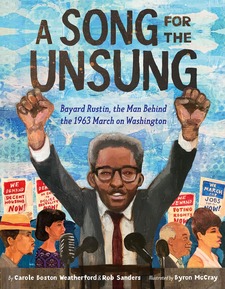
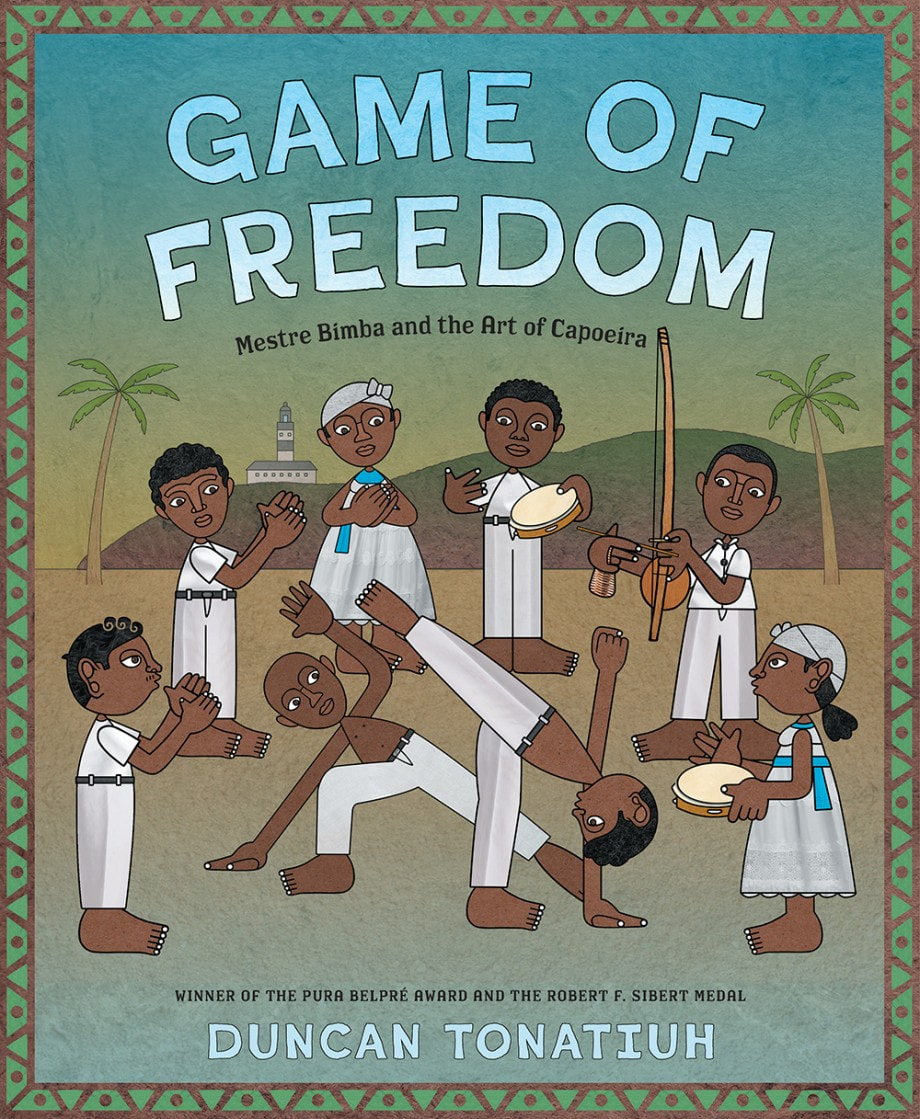
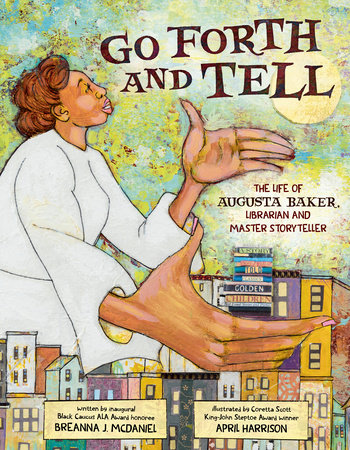

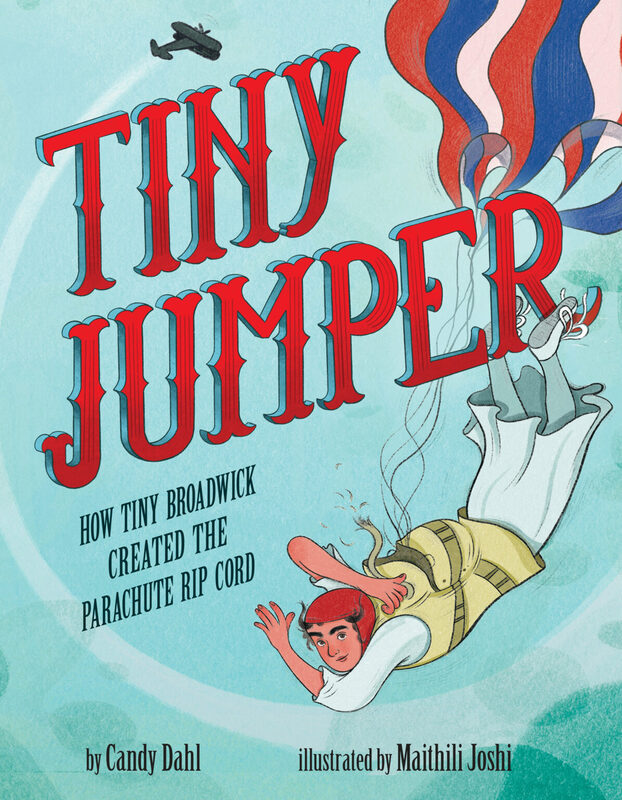
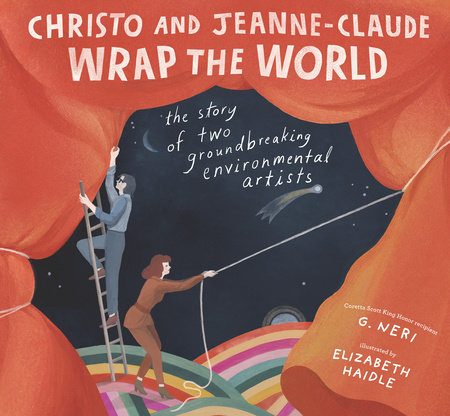
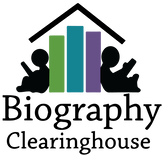

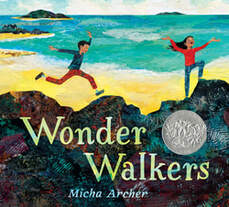
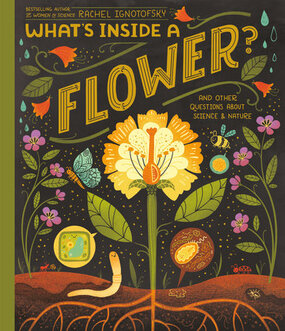
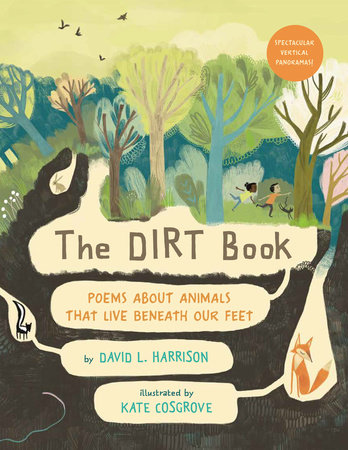
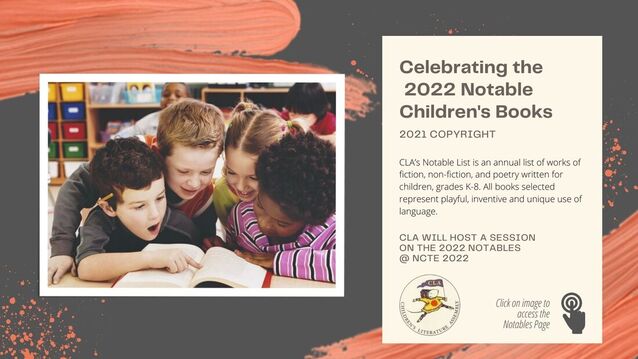
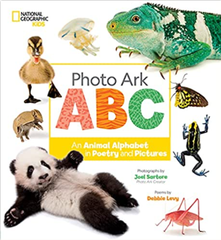
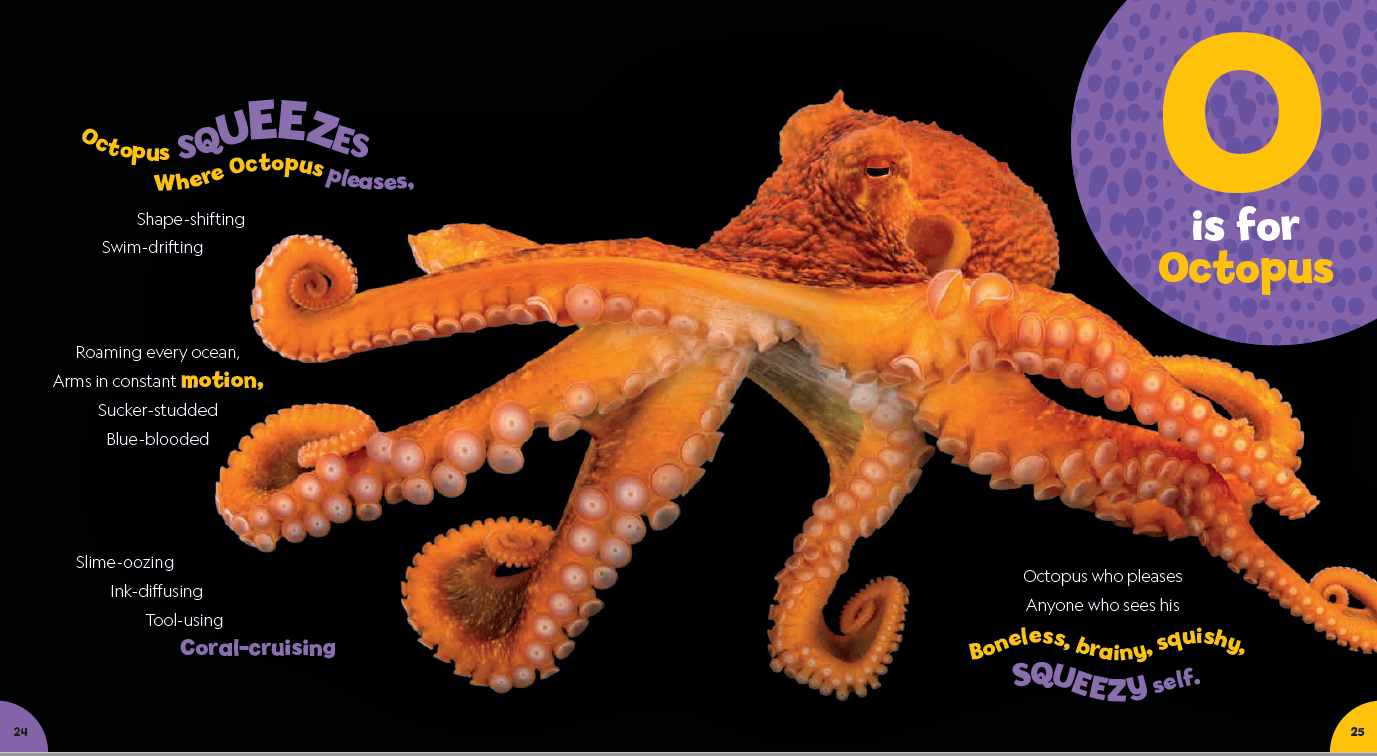
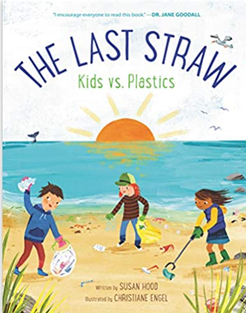
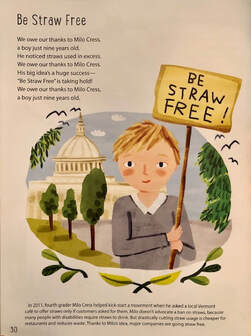
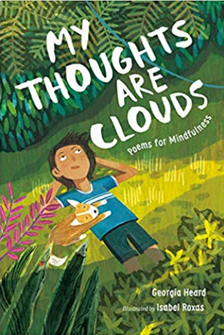
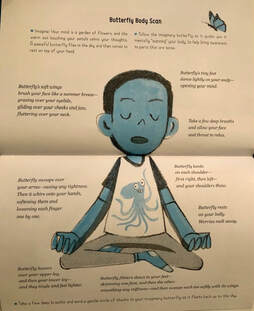
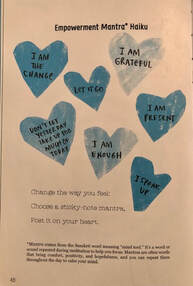

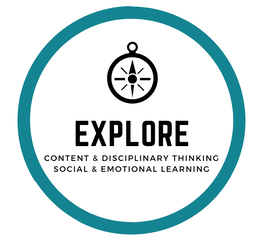


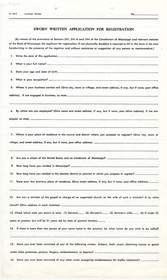
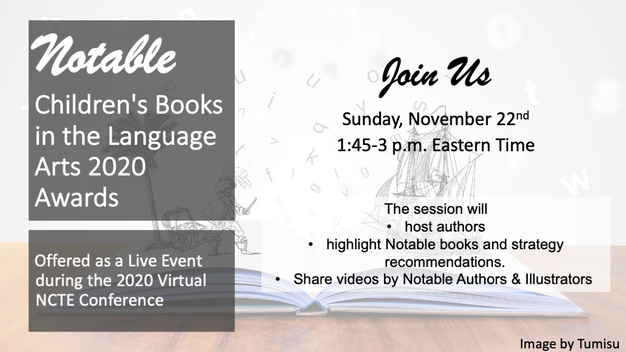

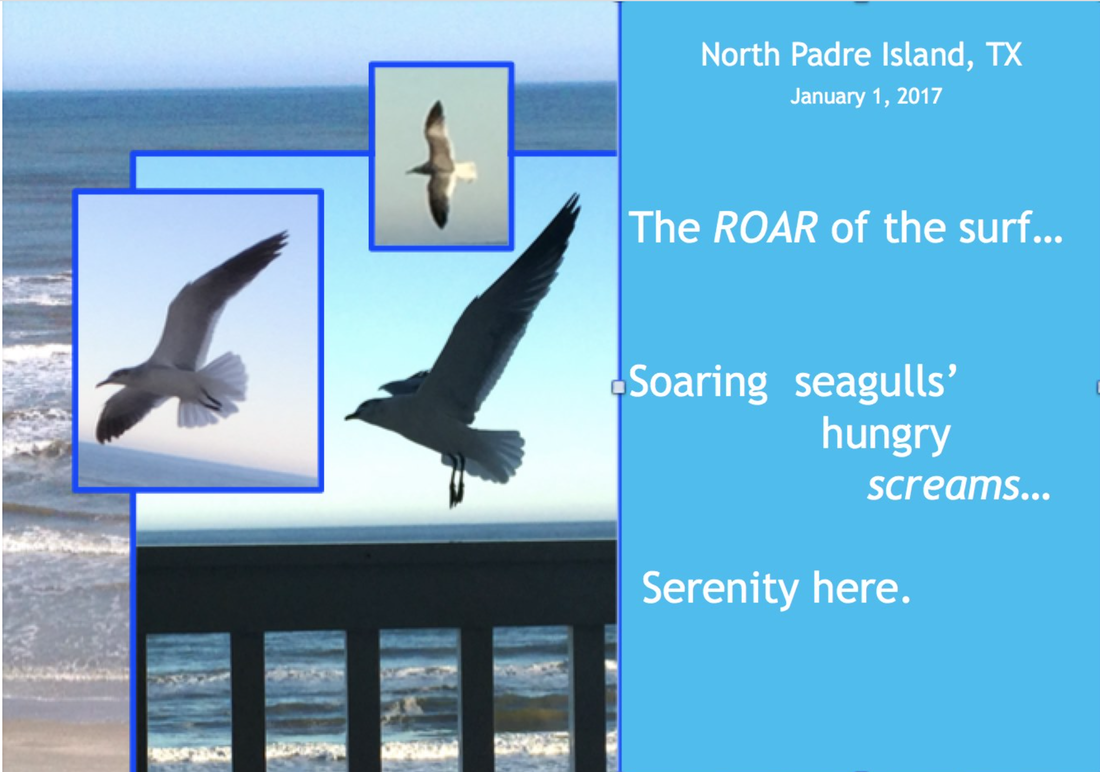
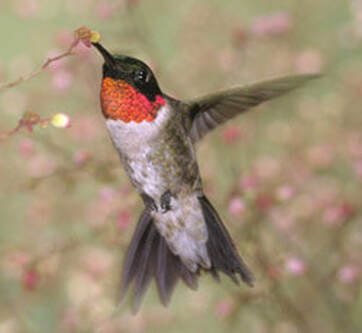
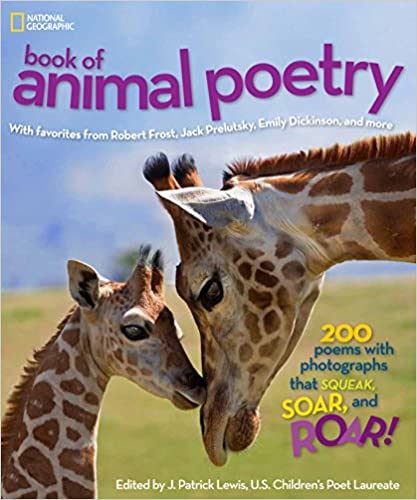
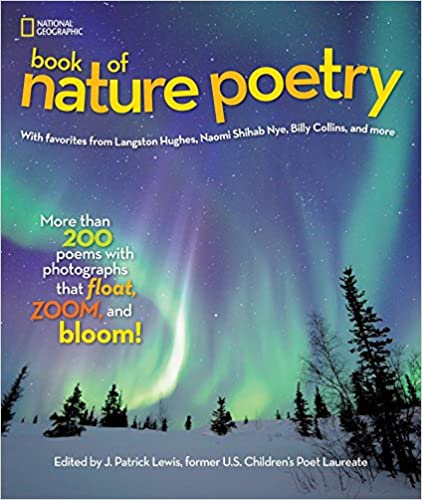
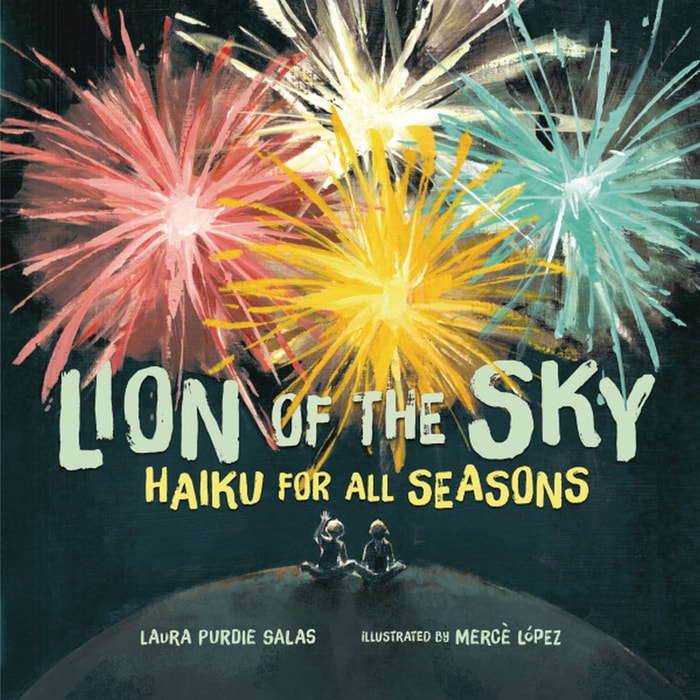
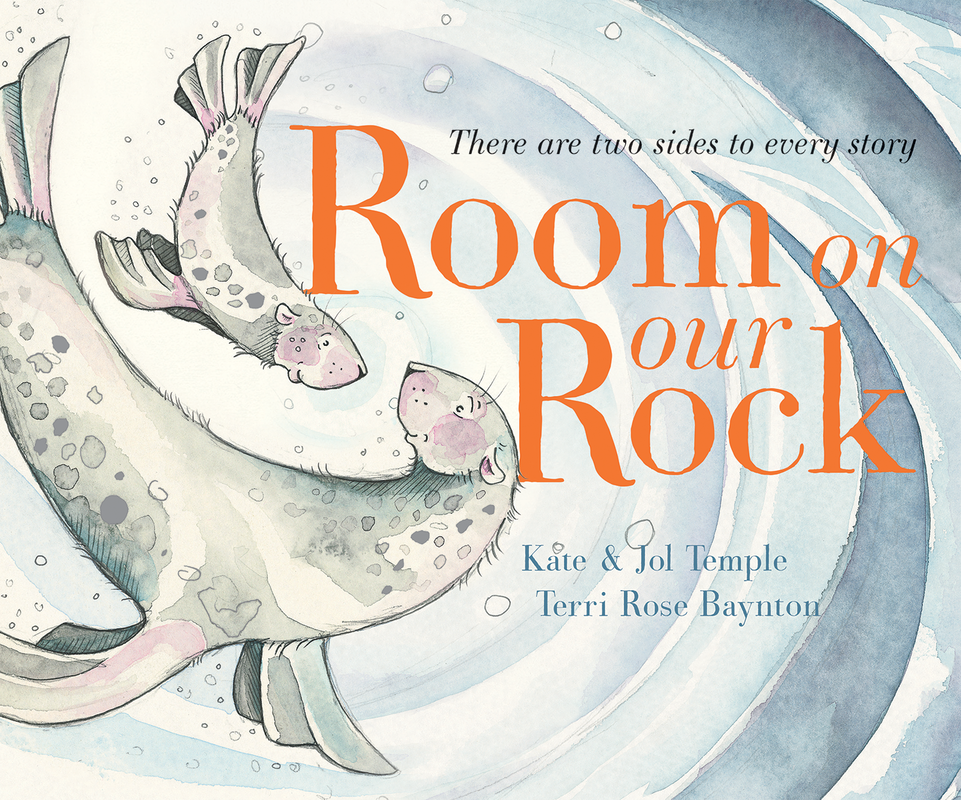

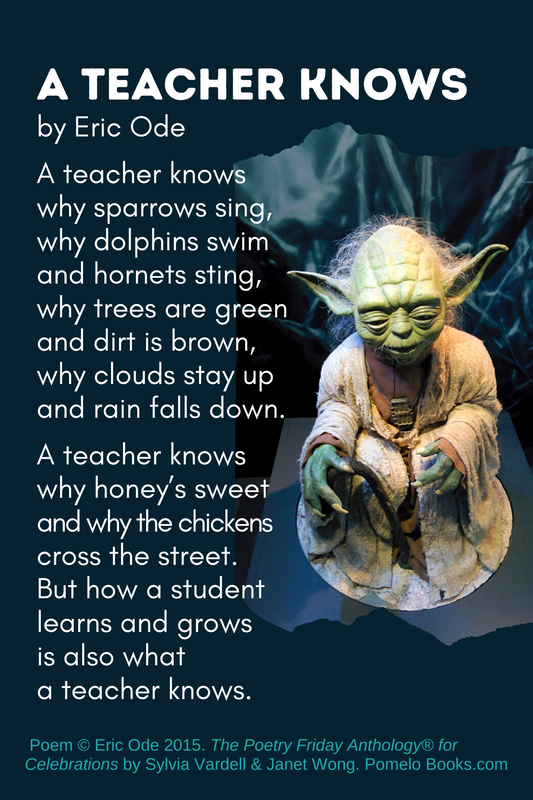
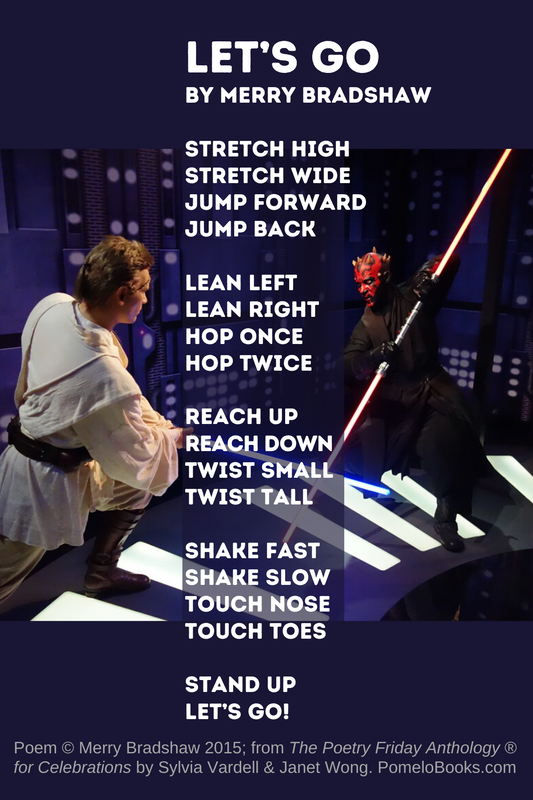


 RSS Feed
RSS Feed